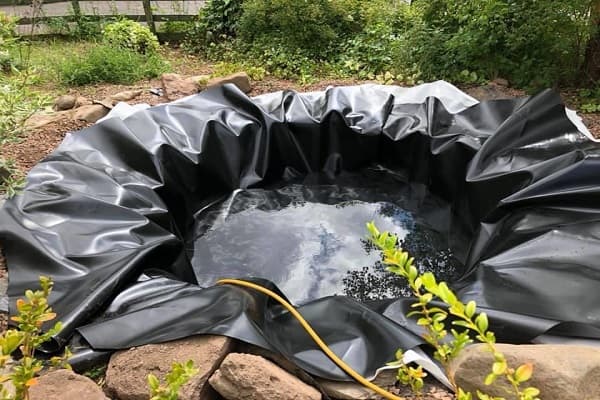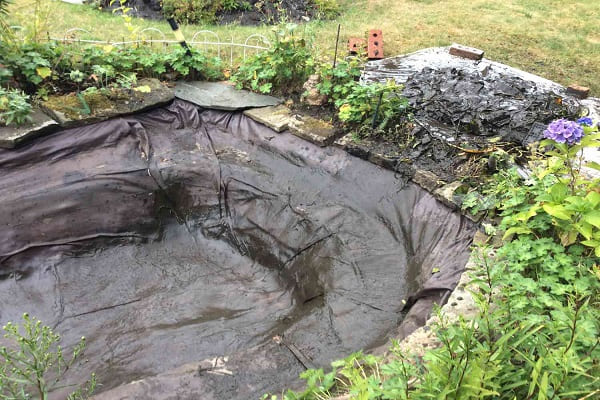What Is Pond Sludge, Causes and How To Remove It? [Practical Guide]
Sludge is an inevitable yet common issue for pond owners. Well, it’s not a major concern when it’s present only in trace amounts, but issues might arise when sludge accumulates in your pond.
We’re referring to the smelly, viscous layer that forms at the base of your pond. You know, despite its prevalence, pond sludge is often misunderstood and poorly addressed by pond owners.
That’s why in this blog post, we will discuss it in detail, its causes, and how to remove it. Without wasting much time, let’s get into it.
What is pond sludge?
The term “pond sludge” is used to describe the mixture of organic and inorganic debris that eventually sinks to the bottom of a pond or other body of stagnant water.
Decaying plants, algae, and feces may also find their way to the bottom of the pond, where bacteria and fungi aid in their decomposition process. This causes these organic substances to break down gradually over time forming sludge.
Factors like the pond’s age and size, water quality, nutrient levels, and the existence of aquatic life might affect the sludge layer’s thickness and consistency.
Pond sludge causes harm to your pond’s ecosystem. Not just that, it can be harmful to fish and other aquatic species because it uses up oxygen in the water.
Causes of pond sludge
Pond sludge is unattractive; it can turn an otherwise lovely pond muddy and unusable. But, what could be its cause? We will address that in this section. So keep scrolling.
Organic matter
One of the major causes of pond sludge is excessive organic materials. Yes, the same elements that provide the basis of life can also cause havoc in your pond.
Plant detritus, such as fallen leaves and twigs, degrades slowly in water, providing a rich source of nutrients.
The natural environment of your pond can benefit from some organic materials. But when there is too much of anything, problems arise.
Imbalance in the ecosystem
There is a fine balance of different creatures in every pond that work together to keep it healthy.
Microorganisms, plants, fish, and other macroorganisms all contribute significantly. But if this equilibrium is tempered, problems may arise.
An overabundance of fish, for instance, might increase the concentration of nutrients in the water through their feces, resulting in sludge accumulation.
Poor water circulation
A still pond, like a pool of standing water, can become a breeding ground for filth and mosquitoes. Keeping the water in your pond moving is essential for its continued health.
In addition to aerating the water, it also discourages the buildup of nutrients and stops detritus from sinking to the bottom.
Sludge forms when nutrients and organic debris gather at the pond’s bottom because of poor water circulation.
Weather
Weather also contributes to pond sludge buildup. When it rains a lot, a lot of unwanted materials can get washed into your pond, which is not good for it.
Sludge may be set off by these materials. Algae development can also be stimulated by too much sunshine, especially in shallow ponds. Consequently, climate can play a role in pond sludge formation.
Human activities
Sludge formation can also be caused by human activities such as overfeeding fish, adding too much fertilizer to the area around the pond, or failing to keep the plant and fish populations in equilibrium.
As pond owners, you need to be vigilant to prevent the accumulation of sludge in your pond.
Now you know a few of the major contributors to pond sludge. How do you remove them? Keep reading to find out.
How to remove pond sludge
The sludge at the bottom of your pond is dreadful and unattractive. They make a mess of your otherwise perfect pond.
But not to worry, we will help you bring back your pond to its former grandeur with our thrilling solutions. Now, here’s how to remove pond sludge;
Pond vacuum
A pond vacuum is essentially a personal aquatic vacuum cleaner that may be used as a homemade pond sludge remover, sludge, and debris off the bottom of your pond.
It’s a huge step forward in the fight against muck since it quietly and efficiently removes all the sludge without destabilizing the ecosystem.
Scooping out the sludge
Another way you can remove sludge from your pond is by scooping it out. If you wouldn’t mind getting your hands dirty, you can grab a scoop and begin your sludge removal journey right away.
You can remove the muck in increments using a robust net or scoop. Even though it’s a nasty process, the reward of seeing the muck disappear is worth it.
Muck reducer tablets
This pond sludge treatment is like a magic potion that evaporates muck. Toss these potent pills into your pond and watch them go to work.
They help reduce sludge buildup because they include bacteria and enzymes that decompose organic materials, making your murky pond crystal clear and beautiful.
Draining the pond
Draining your pond is another way to remove sludge. However, you should know that draining your pond will necessitate meticulous preparation.
You’ll need a place to drain the water and a strategy for restoring the fish and plants without risking their lives.
After emptying your pond, you can scrub out any residual muck. This approach is more like starting again with a blank slate to design a beautiful new pond.
Sludge busters
Sludge busters are also very effective pond sludge treatment. They can be found in liquid, powder, or pellet form. They have strong enzymes and bacteria that digest the muck in your pond, leaving behind a cleaner and healthier environment.
Simply use the product as directed and see the muck-busters in action. Your pond will be crystal clear after using sludge busters.
Pond net
Another homemade pond sludge remover is pond net. You can use a pond net if you’d rather take a more conventional approach. Grab a pond net and scoop out the muck from the water’s surface carefully, keeping an eye out for debris.
It’s quite similar to netting fish, however, the target here is sludge particles. Floating sludge or debris that hasn’t sunk to the bottom is easy to clear out with this method.
Beneficial Bacteria
Beneficial bacteria usually eat the muck and digest it into harmless substances. There are specialized products on the market that will allow you to add beneficial bacteria to your pond.
Just apply it as directed and wait for the germs to do their thing. The sludge will be consumed over time, creating a better and cleaner habitat for your fish.
Now, here’s a very crucial point to note; the best way to ensure that your pond remains sludge-free over time is through proactive measures.
Sludge accumulation can be greatly diminished with diligent upkeep and management of the pond.
Here are some suggestions for keeping your pond clean
Skim the surface
Leaves, twigs, and other debris floating on the surface of your pond should be skimmed off on a regular basis to prevent the accumulation of sludge.
Use a pond net
Invest in a high-quality pond net to remove any trash or sludge that may have floated to the surface. This will aid in maintaining a sludge-free pond.
Maintain proper filtration
Maintain a filtration system that is effective and proportionate to the size of your pond. Sludge can be avoided with the use of a filter, which will get rid of any extra nutrients and trash.
Balance your ecosystem
Keep a stable population of fish, plants, and other species in your pond to ensure a stable ecology. You shouldn’t keep too many fish because their waste can add to the muck in your pond.
Add beneficial plants
You can limit the amount of sludge in your pond by introducing aquatic plants, which will help absorb excess nutrients and slow the growth of algae.
Maintaining a sludge-free and healthy pond throughout the year is possible with the help of these preventative measures.
Conclusion
As you can see in the blog post, pond sludge is a typical concern for pond owners and can cause a number of issues for your fish if you do nothing to address the problem.
Your fish will be healthier, the water will be clearer, and the pond will look better if you know how to remove pond sludge.
Feel free to use the steps explained in this blog post to remove pond sludge from your pond.
FAQs
Pond sludge is a mixture of decomposing organic materials, sediment, and debris that settles at the bottom of your pond.
Pond sludge is the result of poor water circulation, imbalances in the ecosystem, weather, and the accumulation of organic matter.
Although pond sludge is a tough adversary, it may be defeated with forethought and planning. Sludge may be kept at bay with routine maintenance like cleaning up any fallen debris, cutting back on nutrients, checking the water’s filtration and circulation, and keeping an eye on the fish population and their eating patterns.




![How To Stop Your Pond From Overflowing [Pond Overflow Fix]](https://pondmemo.com/wp-content/uploads/2023/05/how-to-stop-your-pond-from-overflowing-1-img.jpg)
![Do Fish Get Bothered by Pond Lights? [Pond Lighting]](https://pondmemo.com/wp-content/uploads/2023/08/do-fish-get-bothered-by-pond-lights-img_1.jpg)
![How To Fix Pond Liner To Wood [Step-By-Step Guide]](https://pondmemo.com/wp-content/uploads/2023/05/how-to-fix-pond-liner-to-wood-1_img-min.jpg)